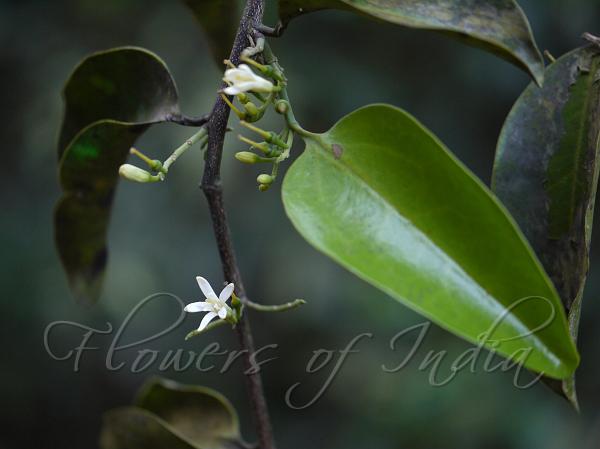|
| Climbing Olax |
|

|

| File size | 317684 |
| Original date | 12/17/12 7:19 AM |
| Resolution | 2048 x 1536 |
| Flash | Flash did not fire, auto |
| Focal length | 45.0mm |
| Exposure time | 1/60s |
| Aperture | 2.8 |
| Focus Distance | |
| Metering Mode | Spot |
| Camera make | Panasonic |
| Camera model | DMC-G1 |
| Sensor type | OneChipColorArea |
|
|
|
|
Photo: |
Botanical name: Olax scandens Family: Olacaceae (Olax family)
Synonyms: Olax obtusa, Roxburghia baccata
Synonyms: Olax obtusa, Roxburghia baccata
Climbing Olax is a large rambling or climbing shrubs; branches
reddish-yellow velvet-hairy, old branches armed; thorns blunt. Leaves
are elliptic or ovate-oblong, up to 9.5 x 3.4 cm, blunt, entire, hairless
above, hairless or finely velvet-hairy beneath; leaf-stalk about 0.8 cm
long, velvet-hairy. Flowers are white, in short, in leaf-axils, solitary
velvet-hairy- densely short hairy racemes, sweet scented. Bracts are
ovate-oblong, co 2 mm long, equalling the flower-stalks, falling
off. Sepal-cup cup shaped, finely fringed with hairs. Petals are usually
5, rarely 6, more or less fused, linear, cleft, 7-9 mm long, stamens
3, staminodes 2-cleft at tip. Ovary is ovoid, hairless; style linear,
half as long as the petals; stigma 3-lobed. Drupes are spherical, yellow,
enclosed by accrescent sepal-cup. except at tip, apiculate. Climbing Olax is
found in India, Sri Lanka, Bangladesh to Peninsula Malaysia, Jawa to
Lesser Sunda Islands.
Medicinal uses: In Ayurvedic medicine, the bark is used in anaemia and as a supporting drug in diabetes; also in the treatment of fever.
In Ayurvedic medicine, the bark is used in anaemia and as a supporting drug in diabetes; also in the treatment of fever.
Medicinal uses:
 In Ayurvedic medicine, the bark is used in anaemia and as a supporting drug in diabetes; also in the treatment of fever.
In Ayurvedic medicine, the bark is used in anaemia and as a supporting drug in diabetes; also in the treatment of fever.| Identification credit: Shrikant Ingalhalikar | Photographed in Karnataka, Maharashtra & Tamil Nadu. |
• Is this flower misidentified? If yes,